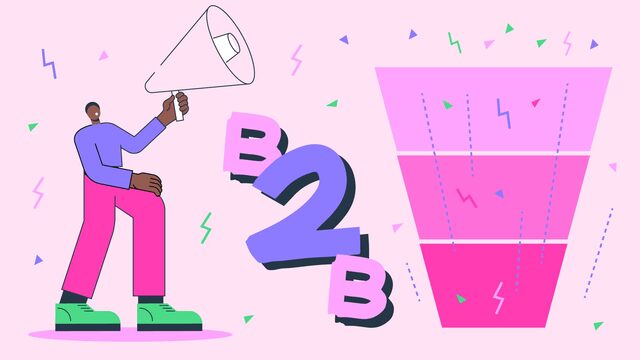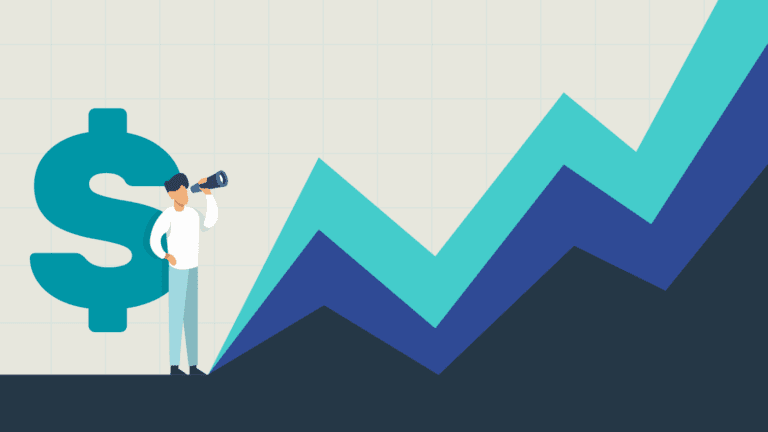When Wpromote and Ascend2 surveyed hundreds of B2B marketers in May 2022 for our annual report on the State of B2B Marketing, delivering quality leads (31%) and delivering more leads (30%) were two of the top five marketing objectives.
Lead generation will likely stay front-of-mind for most B2Bs—and for good reason. Qualified leads are the fuel in the B2B marketing engine and one of the basic building blocks of performance evaluation for marketing teams everywhere.
A strong, effective lead gen strategy is non-negotiable, but that doesn’t mean it’s easy.
The explosive growth of digital transformation in the wake of the pandemic and subsequent rise in CX expectations has led to seismic shifts in the B2B landscape. B2B decision-makers now demand a level of seamlessness, convenience, and personalization comparable to their experiences with B2C brands.
So how can B2B marketers rise to the challenge, remove potential roadblocks, and generate quality leads at scale?
The top challenges to successful B2B lead gen in 2022
Delivering quality leads wasn’t just the top strategic challenge for B2B marketers this year, it also ranked in the top three strategic priorities. B2B marketers know that this is a critical component of marketing success, but multiple factors are making lead gen more difficult.
We dug into the specific challenges around lead gen to get a clearer picture of what’s keeping B2B marketers up at night. Topping the list was collecting quality data (41%), creating targeted and engaging content (37%), and managing and tracking leads (33%).
There’s a common theme here: data and its role in the overall customer experience.
B2B marketers need quality data for a couple of reasons, including (but not limited to):
- Meaningful qualification of leads
- Providing the sales team with the right information to move leads down the funnel
- Audience segmentation and targeting
Insights from that data drive many decisions, including content strategy, media planning, and campaign optimization. If you don’t have quality data, it’s a natural next step to struggle with effective content creation. Technology that helps marketers manage and track leads is just window dressing without the right data to pass between teams.
Ineffective lead gen = a world of pain for your business
If you don’t solve for your lead gen data problem, you’re facing a domino effect that touches every part of your marketing strategy.
The cost of an ineffective lead gen strategy can be steep; more than half (57%) of B2B marketers report that the end result of lead gen challenges is wasted time and resources. Missed opportunities for revenue (53%) and inefficient use of marketing dollars (48%) finish out the top three associated costs.
Time, money, resources: that’s the unholy trifecta that could spell disaster for your business if you stick to the lead gen status quo and don’t bring your strategy up to speed.
The future of B2B lead gen is mostly digital—and that future is coming fast
One of the major things separating the best-in-class B2B marketers from the rest of the field is the embrace of digital. Not as a necessary evil, but as an opportunity to connect meaningfully with decision-makers where and how they want to interact with your brand.
According to Deloitte, 67% of the B2B buyer journey now takes place on digital channels. In the past, lead gen was a means to an end: get qualified leads to the sales team. Much of the selling process, from awareness building to lead generation to the sale itself, also happened face-to-face, at conference booths, events, meetings, and more.
Now, Deloitte’s data shows that 75% of buyers say they use more sources to research and evaluate purchases than the year before, and 32% reported that they not only notice targeted digital ads but that those ads positively impacted their view of potential vendors.
Gartner’s Future of Sales report predicts that trend toward digital will continue. By 2025, they project that 80% of B2B sales interactions will occur in digital channels and 60% of B2B sales organizations will transition to data-driven selling.

That should serve as a wake up call to B2B marketers who are clinging to the old way of doing business, but even digital-focused B2Bs might not be setting themselves up for success if they’re failing to prioritize first-party data.
First-party data needs to be a top priority for B2Bs focused on lead gen
Only 18% of B2B marketers pointed to “targeting with less third-party data” as a major challenge in our survey, but only 25% say they are currently prioritizing first-party data collection and utilization in campaigns in response to data privacy changes.
There’s a massive gap between what B2B marketers think is a challenge and what they need to do to solve for it.
As privacy regulations and restrictions continue to roll out, B2Bs cannot continue to depend on third-party data as a viable path to success in a largely digital world. B2B marketers need to serve relevant ads to the right people to maintain lead quality at scale, but that can’t happen without investment in a first-party data strategy.
It’s certainly a key differentiator between the best-in-class marketers and their competition. Top B2B marketers are more than twice as likely to focus on first-party data than those with less successful strategies (41% vs 17%, respectively). 36% of that top group are also looking to get the most value possible out of that data by investing in technology, CDPs, and data clean rooms.
But all is not lost. There’s still time (if you start now) to catch up and position your brand for future lead generation success if you’ve fallen behind.
3 lead generation solutions to implement now
There’s no silver bullet to a perfect lead generation formula. But there are several best practices that you should consider implementing that will give you the edge as the industry continues to evolve toward the digital future.
Prioritize first-party data collection strategies like interactive content: Great interactive content delivers an engaging experience and useful information to your target audience, giving you the opportunity to generate leads while getting valuable insights into your prospects. It is the perfect vehicle for scaling consensual data collection through a mutual, transparent exchange of value.
Optimize your website to capture leads effectively: Your website plays many roles for your business, but is it operating as effectively as possible as an engine for lead generation? Apply a conversion rate optimization (CRO) strategy to make sure your site’s design, copy, CX, content offerings, and more are effectively capturing qualified leads, from your homepage to dedicated campaign landing pages.
Get strategic about building a powerful tech stack: The most successful B2B marketers are twice as likely to point to building an efficient tech stack as a top challenge to lead gen success. Make sure you have the right tools in place to collect and analyze first-party data, deliver more personalized content, target specific audiences, automate campaigns and processes, and improve the overall customer experience and back-end operations.
While there’s not a one-size-fits-all solution to B2B lead generation challenges, there is some DNA that all great lead gen strategies share. Make sure your team can answer the following questions:
- Who are your customers?
- What do they want?
- What challenges are they facing?
- How can your business help them get what they want?
- How can your business help them solve a problem?
- How do they want to get that information from your business?
Figure out your strengths as a business and as a marketing team, and lean into those. Look for gaps or where you’re weak, and start figuring out how to address those areas of opportunity, whether that’s an investment in a tool, outside help, or significantly revamping your strategy.








